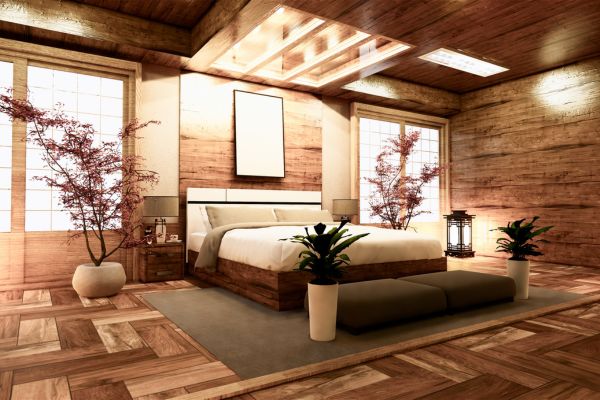Creating the perfect bedroom isn’t just about choosing the right furniture or color palette—it’s also about mastering the art of lighting. Lighting plays a pivotal role in setting the mood, enhancing functionality, and highlighting design elements in any room. When it comes to the bedroom, where comfort, relaxation, and personal expression are key, choosing the right lighting design becomes even more essential. In this guide, we explore expert-approved bedroom lighting design tips that will help you transform your sleeping space into a serene, stylish sanctuary.
Understanding the Role of Lighting in Bedroom Design
Lighting is more than just a necessity—it shapes how a space feels and functions. In the bedroom, lighting needs to balance practical illumination with a soothing atmosphere. Whether you’re winding down at night, reading in bed, or waking up gently in the morning, the lighting you choose can dramatically influence your experience. Implementing the right bedroom lighting design tips ensures your space adapts to every moment of your daily routine while also reflecting your personal style.
Layering Light for Depth and Flexibility
One of the most fundamental bedroom lighting design tips is to incorporate layers of light. A well-designed lighting plan typically includes ambient, task, and accent lighting. Ambient lighting, often provided by ceiling fixtures or recessed lights, offers general illumination that fills the room. Task lighting, such as bedside lamps or wall-mounted sconces, provides focused light for specific activities like reading. Accent lighting, meanwhile, adds drama and depth by highlighting artwork, architectural features, or decorative elements.
By layering different light sources, you create flexibility and visual interest. For example, soft ambient lighting sets the mood, while a brighter bedside lamp supports late-night reading. This layered approach allows you to adjust the lighting to suit your needs and the time of day, making your bedroom more functional and inviting.
Choosing the Right Color Temperature
Another crucial aspect of bedroom lighting design involves the color temperature of your light bulbs. Color temperature affects how warm or cool the light appears, typically measured in Kelvins (K). For bedrooms, a warmer color temperature—between 2700K and 3000K—is ideal. These tones create a cozy, relaxing ambiance that helps signal your body it’s time to unwind.
Cooler light temperatures, on the other hand, can feel harsh and clinical, disrupting your ability to relax before bed. That’s why one of the most essential bedroom lighting design tips is to stick with soft, warm lights that promote restfulness. Modern LED bulbs often offer adjustable color temperatures, allowing you to shift between cool and warm tones as needed, which can be especially beneficial for multipurpose bedrooms that double as workspaces.
Embracing Dimmers for Mood Control
Installing dimmer switches is a subtle yet powerful way to enhance your bedroom lighting. Dimmers offer control over brightness levels, allowing you to adjust the lighting based on your mood or activity. Lower light levels in the evening can signal your body to prepare for sleep, while brighter settings during the day support tasks like organizing or dressing.
One of the often-overlooked bedroom lighting design tips is integrating dimmers into all your primary light sources. Whether it’s your ceiling fixture or wall sconces, the ability to modulate light intensity adds a personalized touch to your space. Furthermore, dimmable lighting contributes to energy efficiency and extends bulb life, making it a smart and sustainable choice.
Highlighting Architectural and Decorative Features
Incorporating accent lighting can dramatically enhance the aesthetics of your bedroom. Using hidden LED strips behind headboards, under floating shelves, or around cove ceilings can add a sophisticated glow without being overpowering. These subtle highlights draw attention to architectural features and add layers of depth and character to the room.
At the same time, using pendant lights or decorative chandeliers as focal points can add flair and elegance. One of the more creative bedroom lighting design tips involves treating lighting as art. Choosing fixtures with unique shapes or materials can double as both a source of light and a statement piece, elevating the overall design of the room.
Personalizing Bedside Lighting
Your bedside lighting setup should align with your lifestyle and nighttime habits. For avid readers, adjustable wall-mounted sconces or articulated lamps offer focused, direct light without disturbing a partner. Meanwhile, for those who prefer a minimalist aesthetic, sleek pendant lights hung above the nightstand free up surface space and add a modern touch.
Another element to consider is the ease of access. Lighting with touch-sensitive controls or voice-activated features can enhance comfort and convenience. Among the most practical bedroom lighting design tips is placing light controls within arm’s reach of the bed. This makes it easier to adjust lighting without needing to get up, contributing to a seamless and restful experience.
Using Natural Light to Your Advantage
While artificial lighting is essential, maximizing natural light is equally important in bedroom design. Large windows, sheer curtains, and strategically placed mirrors can enhance daylight flow, making the room feel brighter and more open. During the day, natural light helps maintain a healthy circadian rhythm, improving mood and energy levels.
Positioning your bed and mirrors to reflect sunlight can enhance the room’s natural brightness without additional fixtures. When evening comes, layering artificial light complements the loss of natural light, maintaining a cozy ambiance. Incorporating this balance is among the most timeless bedroom lighting design tips, as it leverages both functional and psychological benefits.
Keeping Aesthetic Consistency
Lighting fixtures should harmonize with your bedroom’s design style. Whether you prefer modern minimalism, rustic charm, or vintage glamour, your choice of lamps, pendants, and sconces should reflect the overall aesthetic. Matching finishes and consistent design lines help create a cohesive look that feels intentional and curated.
For instance, matte black fixtures pair beautifully with industrial or contemporary interiors, while brass or gold finishes enhance traditional or bohemian styles. One of the most overlooked yet impactful bedroom lighting design tips is treating lighting as a core design element—not just an afterthought. The right lighting can tie together furniture, textiles, and colors, creating a unified and visually pleasing environment.
Balancing Beauty and Function
While aesthetics are crucial, practicality should never be sacrificed. Ensuring there is sufficient lighting in areas like closets, dressing spaces, and vanity corners is essential for functionality. Recessed lighting inside wardrobes or motion-sensor lights can provide convenience without compromising the serene vibe of the bedroom.
A well-lit room should support both the decorative and everyday aspects of your lifestyle. The key is to find fixtures that do double duty—looking beautiful while serving a clear function. Incorporating this mindset into your approach ensures that your lighting design remains both beautiful and practical over time.
Final Thoughts: Crafting the Perfect Bedroom Ambiance
Designing the ideal bedroom goes beyond selecting comfortable bedding or stylish furniture. Lighting is the silent partner in creating ambiance, functionality, and emotional comfort. By following these bedroom lighting design tips, you can transform a simple bedroom into a luxurious retreat that caters to your needs throughout the day and night.
From layering different types of light and choosing the right color temperature to embracing dimmers and accent lights, every choice you make plays a role in shaping your personal sanctuary. When done right, lighting not only enhances the appearance of your bedroom but also elevates the entire experience of being in it. Embrace these tips to achieve a beautifully lit, effortlessly inviting bedroom that supports rest, relaxation, and rejuvenation.







